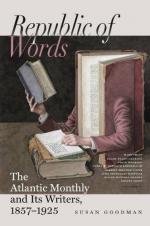The two Presences of the Eleusinia,—the earthly Demeter,[b] the embodiment of human sorrow, and the heavenly Dionysus,[c] the incarnation of human hope,—these are the two Great Presences of the Universe; about whom, as separate centres,—the one of measureless wanderings, the other of triumphant rest,—we marshal, both in the interpretations of Reason and in the constructions of our Imagination, all that is visible or that is invisible,—whatsoever is palpable in sense or possible in idea, in the world which is or the world to come. Incarnations of the life within us, in its two developments of Sorrow and Hope,—they are also the centres through which this life develops itself in the world: it is through them that all things have their genesis from the human heart, and through them, therefore, that all things are unveiled to us.
[Footnote b: Demeter is [Greek Gae-mhaetaer], Mother Earth.]
[Footnote c: The same as Iacchus and the Latin Bacchus.]
But these Two Presences have their highest interest and significance as foci of the religious development of the race: and inasmuch as all growth is ultimately a religious one, it is in this phase that their organic connections with life are widest and most profound. As such they appear in the Eleusinia; and in all mythology they furnish the only possible key for the interpretation of its mystic symbolism, its hieroglyphic records, and its ill-defined traditions.
Accordingly we find that all mythology naturally and inevitably flows about these centres into two distinct developments, which are indicated,—
1. In Nature; inasmuch as they are first made manifest through symbols which point to the two great forces, the active and the passive, which are concerned in all natural processes (sol et terra subjacens soli); and,
2. In the primitive belief among all nations, that men are the offspring of the earth and the heavens,—and in the worship equally prevalent of the sun, the personal Presence of the heavens, as Saviour Lord, and of the earth as sorrowing Lady and Mother.
Why the earth, in this primitive symbolism and worship, was represented as the Sorrowing One, and the sun as Saviour, is evident at a glance. It was the bosom of the earth which was shaken with storm and rent with earthquake. She was the Mother, and hers was the travail of all birth; in sorrow she forever gathered to herself her Fate-conquered children; her sorrowful countenance she veiled in thick mists, and, year after year, shrouded herself in wintry desolation: while he was the Eternal Father, the Revealer of all things, he drove away the darkness, and in his presence the mist became an invisible exhalation; and, as out of darkness and death, he called into birth the flowers and the numberless forests,—even as he himself was every morning born anew out of darkness,—so he called the children of the earth to a glorious rising in his light. Everything of the earth was inert, weighing heavily upon the sense and the heart, only waiting its transfiguration and exaltation through his power, until it should rise into the heavens; which was the type of his translation to himself of his grief-oppressed children.




